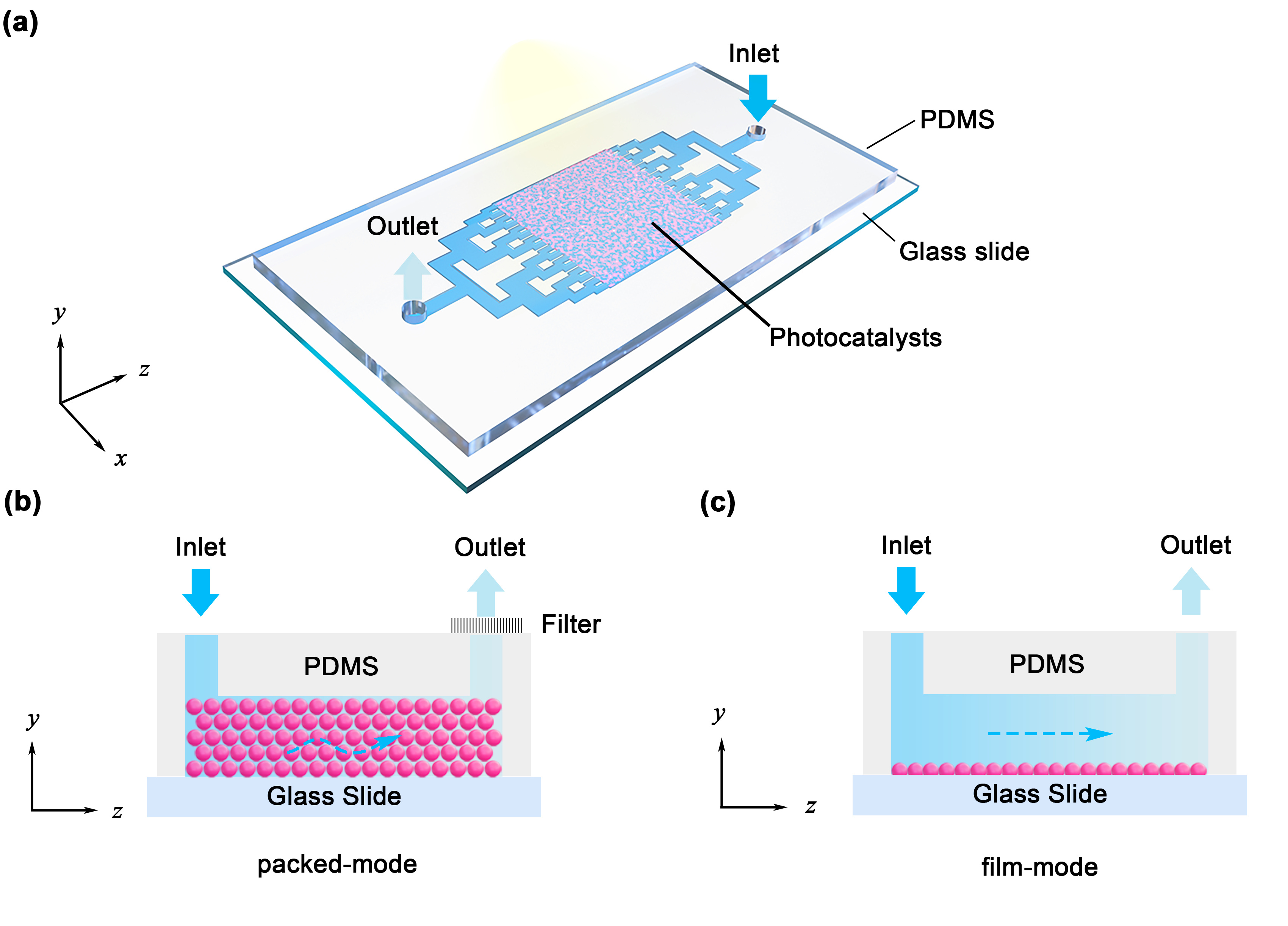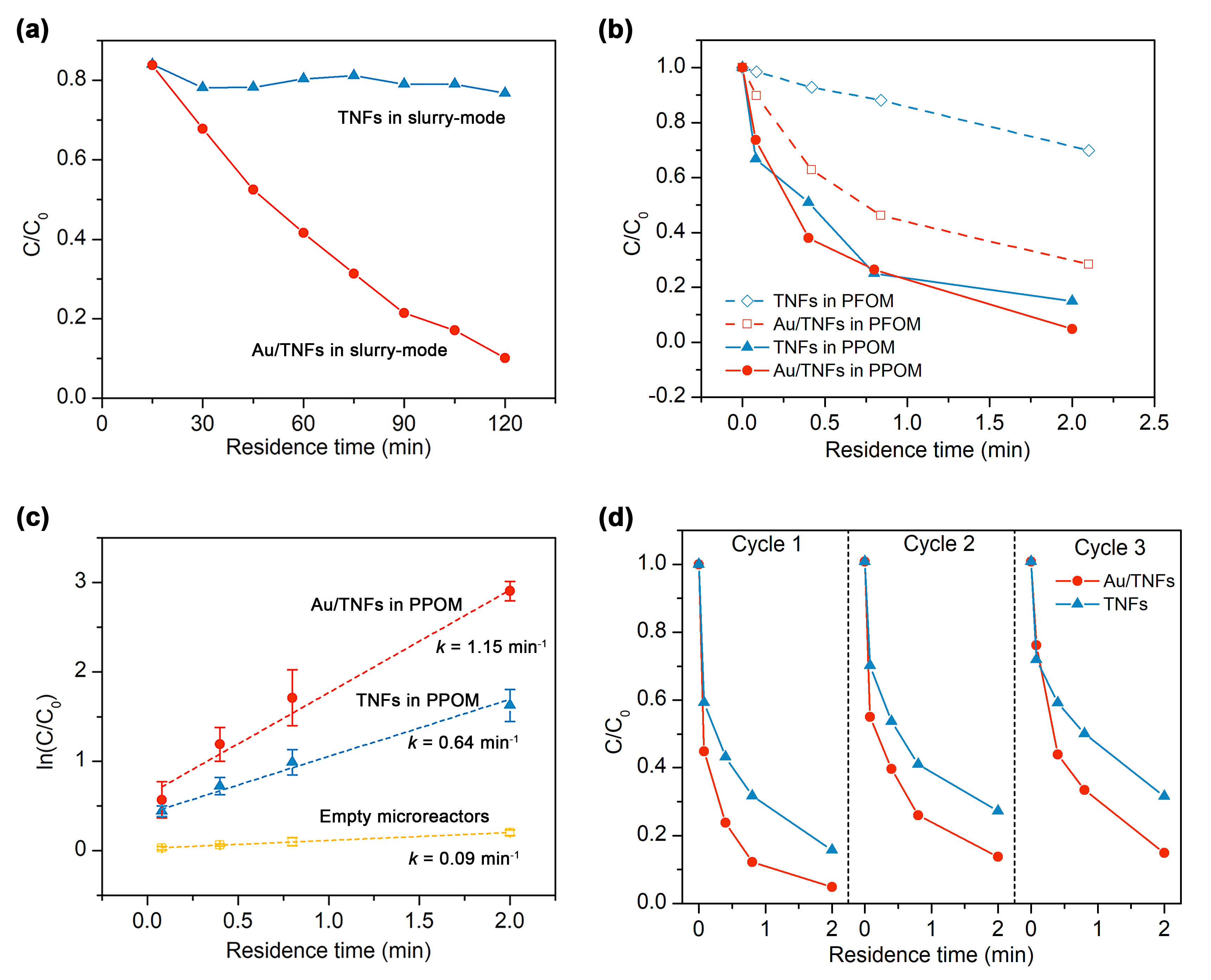Bridging optofluidics and plasmonic nanotechnology for sustainable photocatalytic water purification
Published in Ecology & Evolution and Materials
Access to clean water remains one of the most critical global challenges. Traditional water treatment methods are often time-consuming, complex, and hard to effectively remove emerging contaminants, leaving residual pollutants in treated wastewater. As discharge standards become more stringent, there is an urgent need for advanced water purification technologies that can address these challenges. Photocatalysis, a promising approach that harnesses light energy to degrade a wide range of contaminants, has gained increasing attention for its potential to complement conventional water treatment methods by targeting residual pollutants. Our study, detailed in the manuscript "Packed bed optofluidic microreactors with Au decorated TiO2 nanoflowers for visible light photocatalytic water purification," seeks to advance photocatalytic water purification by integrating optofluidics with the unique properties of plasmonic nanoparticles. We developed a system that not only achieves higher catalytic performance but is also compact, scalable, and adaptable for real-world applications.
The study designed an innovative planar packed-mode optofluidic microreactor (PPOM) platform, which was directly packed by plasmonic gold nanoparticles-decorated TiO2 nanoflowers (Au/TNFs) photocatalysts (Figure 1(a) and (b)). Using methylene blue (MB) as a model chemical pollutant, we evaluated the PPOM's performance in a pilot study under visible light. The incorporation of Au/TNFs introduced localized surface plasmon resonance (LSPR), which enhanced light absorption, facilitated hot electrons transfer, and consequently improved the photocatalytic efficiency. Additionally, the packed-mode configuration ensured efficient contact between the catalyst and reactants, optimizing pollutant degradation.

Figure 1. Schematics of optofluidic microreactors for visible light-driven water purification. (a) Three-dimensional (3D) diagram of the optofluidic microreactor loaded with photocatalysts for water purification under visible light. Cross- sectional views of (b) the planar packed-bed optofluidic microreactor (PPOM) and (c) the planar film-mode optofluidic microreactor (PFOM).
We first conducted detailed material characterizations, including scanning electron microscopy (SEM), transmission electron microscopy (TEM), X-ray diffraction (XRD), inductively coupled plasma-mass spectrometry (ICP-MS), and ultraviolet-visible diffuse reflectance spectra (UV-DRS), to analyze the structure, properties, interactions between Au nanoparticles (AuNPs) and TiO2. Subsequently, the performance of the PPOM was systematically compared to two other reactor configurations: a planar film-mode optofluidic microreactor (PFOM) (Figure 1(c)) and a conventional slurry reactor.
Our experiments demonstrated that Au/TNFs exhibited over 46 times the photocatalytic efficiency of TNFs alone (Figure 2(a)). This performance was further enhanced by nearly 60-fold when the PPOM configuration was employed (Figure 2(b) and (c)). The synergistic combination of AuNPs and the PPOM configuration leveraged the LSPR effect, rapid hot-electron transfer, and improved mass transfer, significantly boosting photodegradation efficiency.

Notably, the PPOM with Au/TNFs achieved more than double the photodegradation efficiency of the PFOM. This underscores the importance of optimizing surface-area-to-volume ratios (SA:V) and optical paths in microreactors. The Au/TNFs-PPOM platform also demonstrated excellent stability and reusability (Figure 2(d)), making it a promising candidate for continuous water purification in industrial settings.
To strengthen our findings, we conducted numerical simulations and expanded discussions on the underlying mechanisms. These included the multifaceted role of LSPR, SA:V calculations for different reactor configurations, and optical path analysis. Together, these analyses provided deeper insights into how the plasmonic effect and reactor design synergistically improve system efficiency.
This study not only demonstrates a significant advancement in visible-light-driven water purification, but also showcases the potential of integrating optofluidics with plasmonic nanotechnology. Beyond water purification, the versatility of the PPOM platform opens avenues for applications in solar-driven energy conversion, biomedical diagnostics, and chemical synthesis.
While our work represents a step bridging laboratory research and practical applications, challenges remain. For instance, achieving uniform packing of photocatalysts and preventing clogging in PPOM are key technical hurdles. Scaling up optofluidic microreactors for industrial applications will require addressing long-term stability, cost optimization, and the development of modular systems.
Moving forward, we plan to explore the alternative plasmonic materials with enhanced efficiency, further optimize microreactor designs, and evaluate the platform's performance in treating real wastewater samples. Life cycle assessments will also be conducted to quantify environmental impacts, ensuring that our solutions remain both effective and sustainable.
Our work highlights the transformative potential of integrating optofluidics and plasmonic nanotechnology for addressing critical water management challenges. As researchers and practitioners continue to innovate in this field, we believe our findings represent an important step toward sustainable and scalable water treatment technologies. It is an exciting time to be part of this journey, and we look forward to further contributions to advancing water purification and management solutions.
Follow the Topic
-
npj Clean Water

This journal publishes high-quality papers which report cutting-edge science, technology, application, policy and societal issues that contribute towards a more sustainable supply of clean water.
Related Collections
With Collections, you can get published faster and increase your visibility.
Water Testing: Microbial Innovations in Sustainable Wastewater Treatment
Publishing Model: Open Access
Deadline: Dec 31, 2025
Advancing Artificial Intelligence Innovations for Resilient and Sustainable Clean Water: Novel Methodologies and Case Studies
Publishing Model: Open Access
Deadline: Feb 28, 2026




Please sign in or register for FREE
If you are a registered user on Research Communities by Springer Nature, please sign in